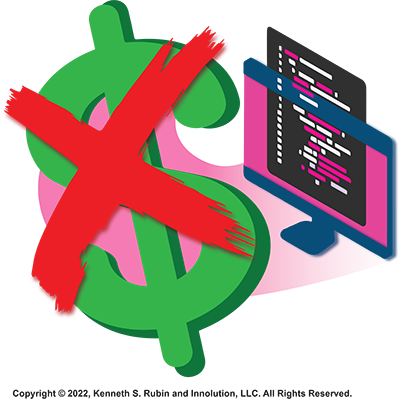Cross-Functional vs. T-Shaped: Are They the Same Concept?
As an agile coach I work with many companies and the terms “cross-functional” and “T-Shaped” get tossed about quite a bit. Do they mean the same thing? Certainly, many people use them synonymously.
To avoid confusion when organizing agile teams and larger agile…
Agile Organizations Must Address Both Structural and Instantiated Dependencies
In this article I want to focus on the distinction between structural and instantiated dependencies. Most of the dependency management recommendations that you encounter deal with instantiated dependencies. However, the larger return on investment will be achieved by…
The Economic Consequences of Dependencies
In the first article in this Dependency Series, I discussed how shared dependencies are a critical factor that impact success when attempting agile at scale. In this second article I discuss the economic consequences of dependencies.
Dependencies Effect When Work…
Shared Dependencies – The Critical Issue When Adopting Agile at Scale
This article is the first in a series on the topic of dependencies and how to deal with them to achieve successful outcomes when utilizing agile at scale. In this short article I will define what I mean by dependencies and emphasize that shared dependencies are the ones…
System Access Rights Can Be an Impediment to Creating Feature Teams
A feature team is a cross-functional and cross-component team that can pull end-customer-valuable items from the product backlog (i.e., “features”) and complete them. One approach to creating feature teams is to combine people with experience in each of the components…
Avoid Narrow Framing – An Important Aspect of an Agile Mindset
Have you found yourself in a situation where a decision has to be made and the people involved believe there to be only two choices? The decision could be as simple as “Do we go out to dinner or do we stay at home?” Or, “Should we build Product A or not?” Typically,…
An Agile Approach to Dealing with Four Different Types of Assumptions
From an agile perspective, we never let an important assumption live long in an unvalidated or low-confidence state. The risk in doing so is that we end up making decisions or creating work products on top of the yet-to-be-validated or low-confidence assumptions that…
Agile Startup Companies
My wife and I are angel investors – individuals who provide capital to start-up businesses in exchange for equity ownership. We typically invest at the very early stages of a company after friends and family have invested and before venture capitalists invest. Agile…
2020 Scrum Guide Definition of “Increment” Inadequately Addresses Knowledge-Acquisition Work
The 2020 version of the Scrum Guide defines an artifact by the name of “Increment.” This represents a renaming of an already existing Scrum artifact that historically was referred to as either “potentially releasable product increment” or a “potentially shippable product…
